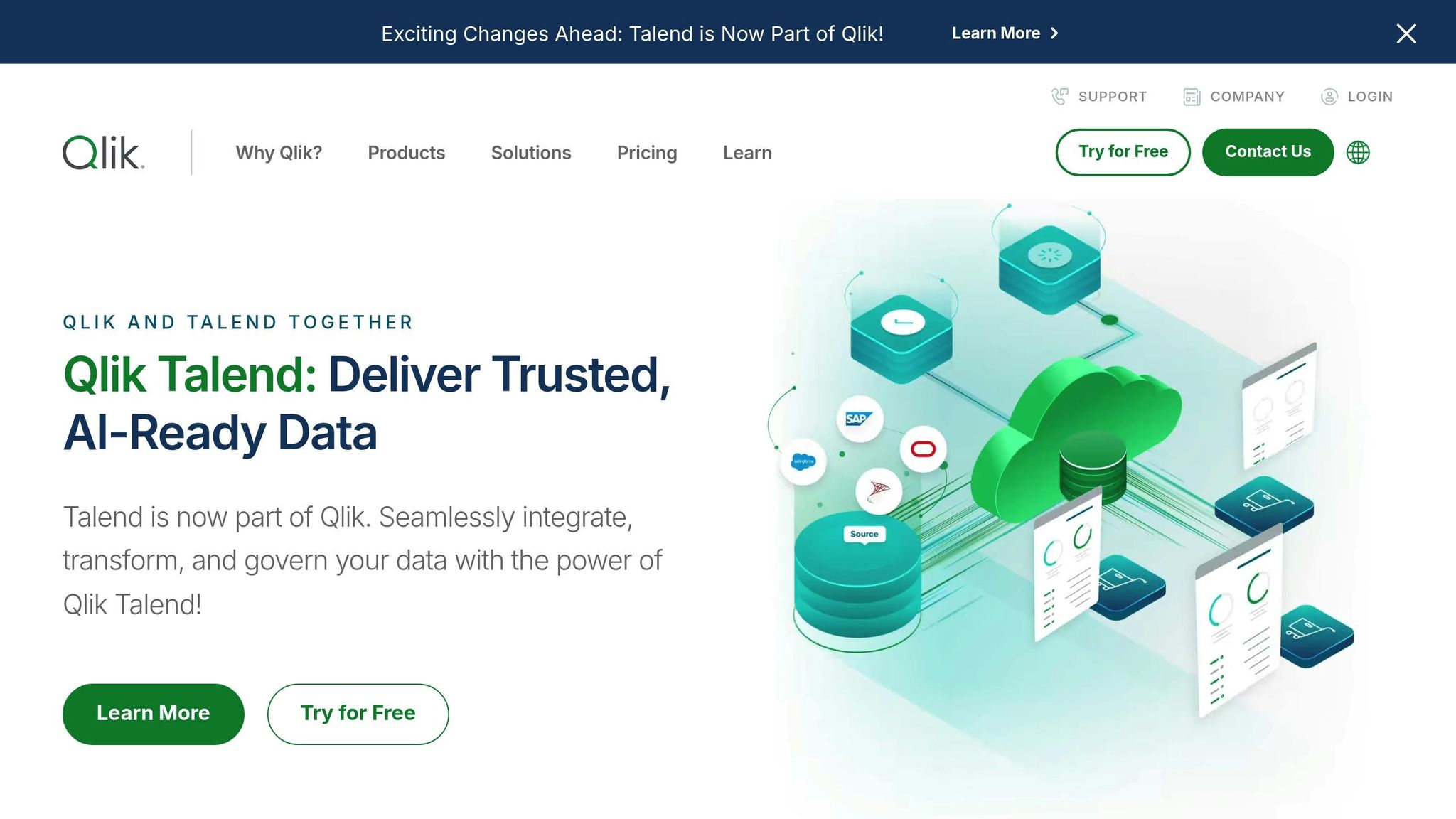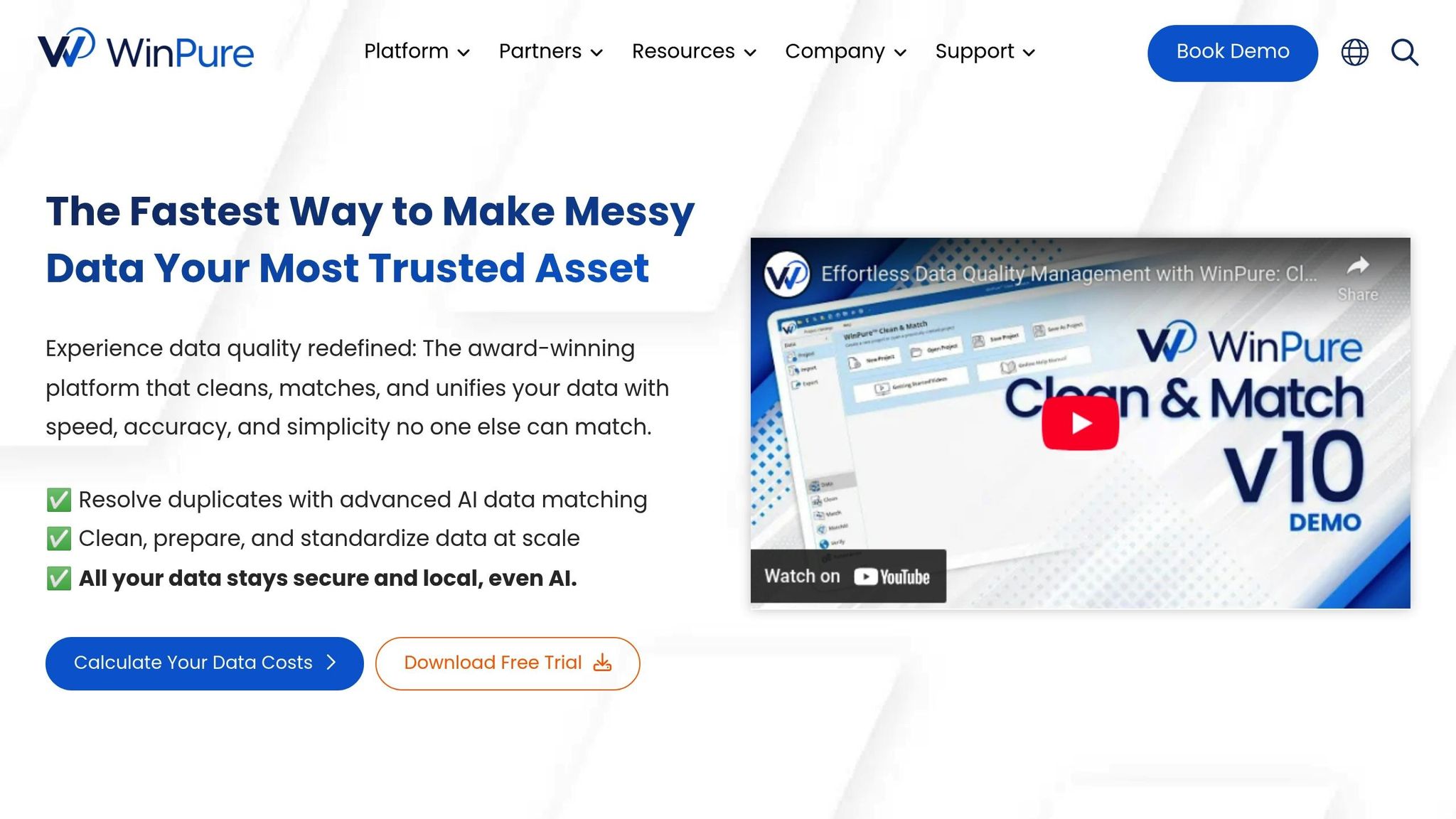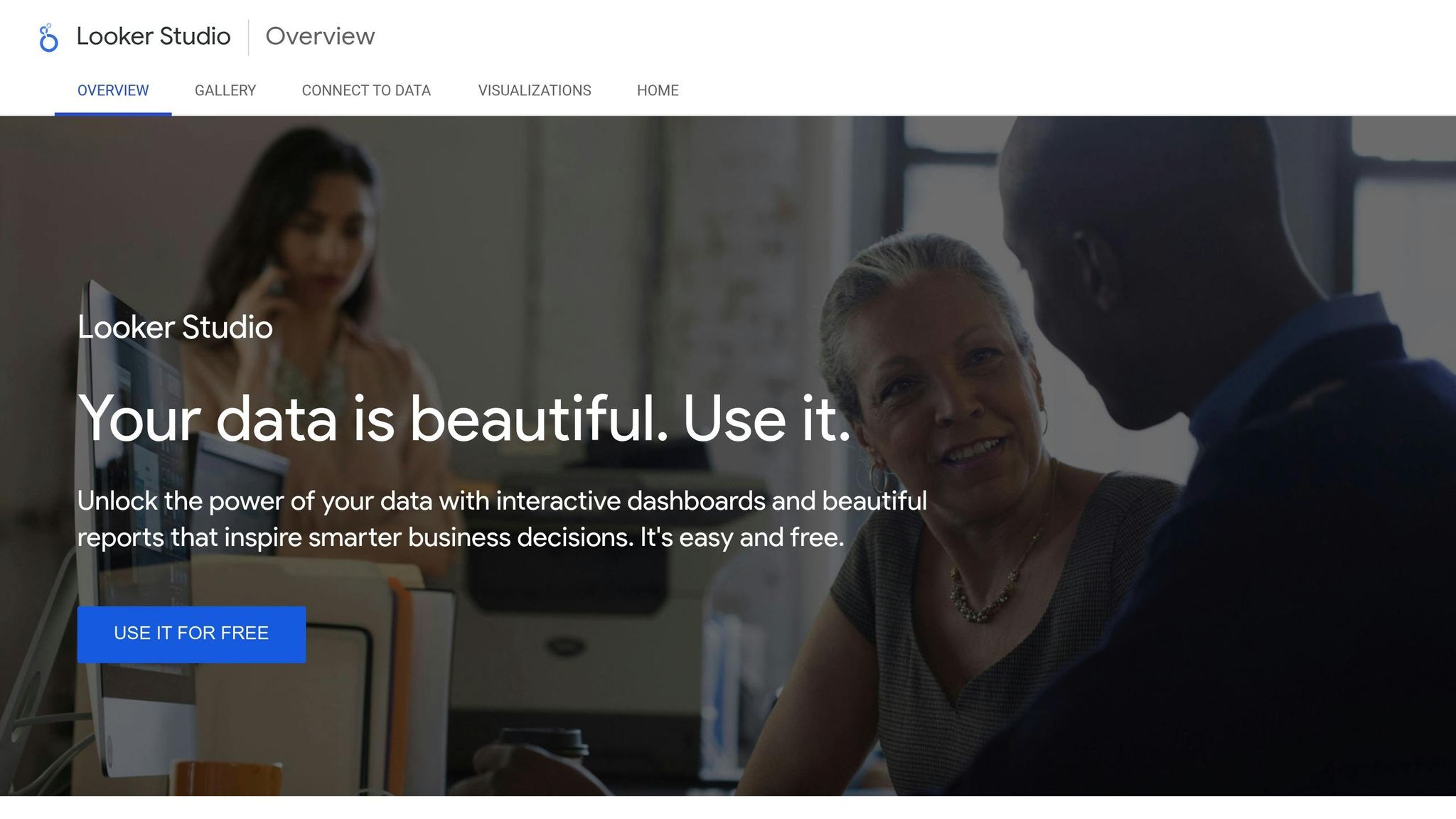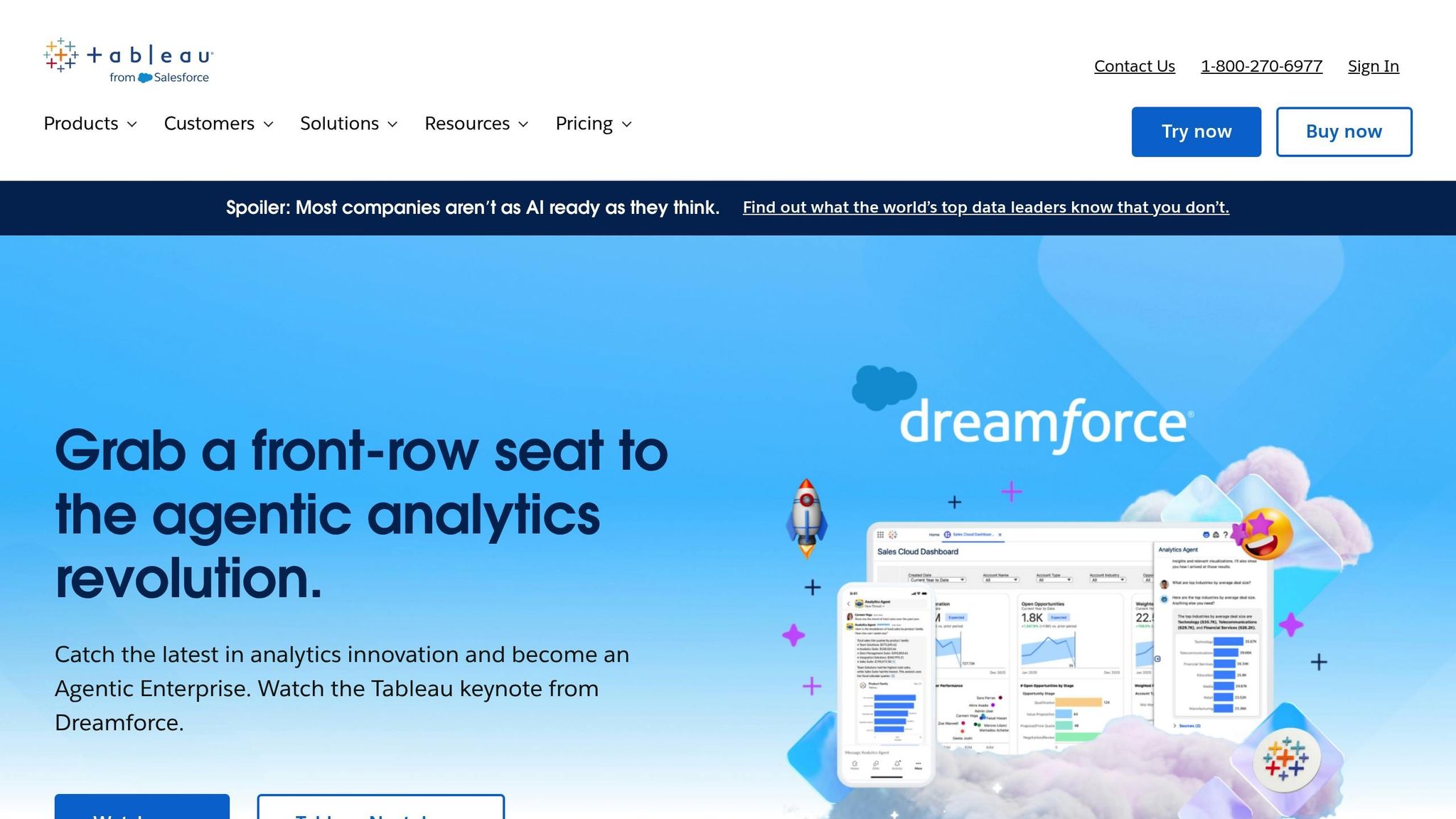Looking to simplify how your business systems work together? Integration frameworks make it easier for small and medium-sized enterprises (SMEs) to connect tools like CRMs, accounting software, and e-commerce platforms. These frameworks reduce manual tasks, minimize errors, and ensure your data flows smoothly across systems. Plus, they set the stage for using AI-driven tools in the future.
Here’s a quick look at the top options:
- Talend: Offers a free version and scalable cloud options for growing businesses.
- Alteryx: Handles complex data workflows with reusable processes for easy scaling.
- Codoflow: Focused on SMEs, but details require further exploration.
- WinPure: Specializes in data quality tools, though limited information is available.
- Google Data Studio: Free tool for creating interactive reports, ideal for visualizing data.
- Tableau: Known for powerful data visualization and AI features, with flexible pricing.
- HubSpot: Combines CRM with easy-to-use integrations and automation, offering a free plan.
Each option is designed to help SMEs save time, reduce errors, and make smarter decisions. Below, we’ll explore their features, costs, and how they can support your business as it grows.
Key Features of Scalable Integration Frameworks for SMEs
For small and medium-sized enterprises (SMEs), ease of deployment should be a top priority when choosing an integration framework. With limited resources and smaller teams, a framework that requires little to no coding can make all the difference. Many of these frameworks come equipped with no-code or low-code interfaces and drag-and-drop tools, allowing non-technical team members to create workflows and connect systems visually. This approach not only speeds up deployment but also simplifies managing data across different platforms. By focusing on these features, SMEs can better assess which framework aligns with their specific needs.
1. Talend

Talend is a well-regarded data integration platform designed to meet the needs of both large enterprises and small-to-medium-sized businesses (SMEs). It simplifies handling complex data workflows while remaining accessible for businesses as their needs expand.
The platform comes with a free community edition for basic integrations, alongside a cloud-based edition that scales effortlessly to accommodate growing business demands. This cloud option eliminates the need for extensive on-premises infrastructure, making it a practical choice for businesses looking to streamline operations. Talend’s architecture supports integration workflows that improve analytics and reporting, giving companies the flexibility to adapt their data pipelines as their operations grow more sophisticated.
With its no-code interface and scalable setup, Talend delivers the tools SMEs need to simplify deployment and focus on long-term growth. It’s a solid choice for businesses aiming for both efficiency and adaptability in their data integration processes.
2. Alteryx

Alteryx grows alongside businesses, handling increasingly complex data needs with ease. Its modular structure is designed to tackle larger datasets and manage more intricate integrations as companies expand and their data sources increase. This flexibility ensures the platform can support businesses as they scale.
The Server edition makes it simple to transition from desktop use to organization-wide deployments. Additionally, its workflow reusability ensures that processes created for smaller datasets can effortlessly scale up, protecting the value of earlier investments as data demands grow. These capabilities position Alteryx as a strong option for small to mid-sized businesses looking to scale efficiently over time.
3. Codoflow

Codoflow is another integration option worth considering for small and medium-sized enterprises (SMEs). However, information about its features and pricing from third-party sources is somewhat limited, making it a tool that might require closer examination. For the most accurate and up-to-date details, SMEs should visit Codoflow's official website. Below is a comparison table that provides a quick overview of Codoflow's features alongside other frameworks.
4. WinPure

WinPure provides only a limited amount of verified information for small and medium-sized enterprises (SMEs) regarding aspects like deployment, cost, automation, and scalability. Once more reliable and detailed data becomes available, a thorough analysis will be included. For now, this brief overview serves to maintain consistency within our comparison framework.
sbb-itb-bec6a7e
5. Google Data Studio

Google Data Studio is a free platform designed to turn raw data into interactive, visually appealing reports. While its primary strength lies in reporting, it also offers integration options that help small and medium-sized enterprises (SMEs) bring together data from various sources without breaking the bank.
The platform works seamlessly with key Google tools like Google Analytics, Google Ads, Google Sheets, and BigQuery. It also connects to popular databases such as MySQL and PostgreSQL through its partner integrations. This blend of visualization and data integration makes it a practical choice for SMEs looking to streamline their data management processes.
Cost-efficiency
One of the biggest draws of Google Data Studio is its price - it's free for most standard uses. The only costs come from specific data sources, such as queries in BigQuery. This allows SMEs to focus their budgets on other priorities while still accessing professional-quality reporting tools.
User-friendly Setup
Google Data Studio's drag-and-drop interface is easy to use, even for those with limited technical skills. Users can quickly link their data sources, create reports using pre-made templates or custom designs, and share their findings - all in just a few steps.
Growth-ready and Team-friendly
Built on Google's cloud infrastructure, the platform handles multiple data sources without losing speed or reliability, even as your data grows. It also includes collaborative features, allowing teams to edit and share reports effortlessly, without the need for additional licenses or fees.
That said, while Google Data Studio excels in creating visual reports and integrating data, it doesn’t come with advanced automation or AI-driven features for data integration. SMEs needing those capabilities might consider pairing it with other tools to fill the gap.
6. Tableau

Tableau is a business intelligence platform designed to make data visualization and analytics accessible to businesses of all sizes. With its Ask Data feature, users can simply type questions in plain English and instantly receive visual answers. This functionality is particularly helpful for non-technical staff, allowing them to explore advanced analytics without requiring specialized skills.
The platform connects seamlessly to a variety of data sources, including Excel, Google Sheets, SQL Server, and cloud services like Amazon S3. One of Tableau's standout features is its natural language processing, which breaks down technical barriers and empowers team members across different departments.
Tableau also offers flexible deployment options to suit varying business needs. Tableau Online provides a quick, web-based setup, while Tableau Server offers on-premises control with automated installation. Additionally, its extensive library of pre-built connectors reduces the need for custom development, streamlining the integration process.
Pricing Options
Tableau’s tiered pricing structure makes it a scalable option for small and medium-sized enterprises (SMEs). Here’s a breakdown:
- Tableau Viewer: $15 per user per month
- Tableau Explorer: $42 per user per month
- Tableau Creator: $70 per user per month
Annual plans often come with discounts, and for those looking to share non-sensitive data publicly, Tableau Public is available for free.
Automation and AI Integration
Tableau incorporates AI to simplify and automate analytics. The Explain Data feature uses machine learning to provide insights into trends and anomalies, while Tableau Prep handles data cleaning and transformation tasks automatically. For advanced analytics, Tableau integrates with Python and R, and its APIs and webhooks enable automated data refreshes and workflow triggers. This ensures dashboards stay up-to-date without requiring manual updates.
Built for Growth
Tableau adapts effortlessly as businesses grow. Tableau Online scales automatically in the cloud to accommodate increased usage, while Tableau Server supports load balancing and high availability for on-premises setups. Whether your data needs expand or your user base grows, Tableau’s flexible infrastructure ensures uninterrupted performance.
With its combination of user-friendly features, automation, and scalability, Tableau is a powerful tool for SMEs aiming to leverage data-driven insights without the complexity of traditional analytics platforms.
7. HubSpot

HubSpot is a CRM platform designed to help small and medium-sized enterprises (SMEs) integrate their customer data seamlessly. Beyond its marketing and sales tools, HubSpot brings together information from sources like email, e-commerce platforms, and social media into one centralized, customer-focused dashboard.
What sets HubSpot apart is its user-friendly, drag-and-drop interface and its extensive marketplace of pre-built connectors. These features make it easy for even non-technical users to link popular tools without hassle. Plus, with both free and paid plans available, it’s a flexible choice for businesses working with tight budgets.
HubSpot also leverages AI to automate data management and streamline workflows, freeing up time for teams to work on more strategic goals. Its architecture is designed to adapt as your business grows, ensuring it can handle new integration needs without requiring major overhauls.
Framework Comparison Table
Here's a quick summary of the frameworks discussed earlier. This table serves as a handy reference point.
Note: For in-depth details, it's always best to consult the official documentation provided by each vendor.
| Framework | Overview |
|---|---|
| Talend | A well-known integration platform offering a free community edition and scalable cloud options. |
| Alteryx | Recognized for its strong data analytics capabilities with a modular design that grows alongside your business. |
| Codoflow | Designed for SMEs, it provides workflow automation solutions tailored to smaller enterprises. |
| WinPure | Specializes in tools for improving data quality and managing data effectively. |
| Google Data Studio | A free platform for creating reports and dashboards, seamlessly integrated with Google's ecosystem. |
| Tableau | A business intelligence tool featuring natural language processing, with pricing starting at $15/month. |
| HubSpot | A CRM platform integrating customer data with AI-powered automation, also offering a free plan. |
Conclusion
A well-designed integration framework does more than just simplify daily operations - it lays the groundwork for a strong, future-proof data strategy. The solution you choose can have a lasting impact on how your business handles data and makes decisions.
Focus on solutions that are easy to integrate, scalable, and compatible with emerging technologies. Scalability ensures the framework grows alongside your business and supports evolving processes. To make the best choice, evaluate your current data systems, team expertise, and future growth plans. Look for frameworks that prioritize ease of use, flexibility, and the ability to handle increasing demands.
Sometimes, opting for a solution that's quicker to implement and easier to use can yield better short-term results than a complex, feature-heavy option with a steep learning curve.
Partner with a vendor that combines forward-thinking solutions with reliable support. This ensures your data infrastructure evolves seamlessly as your business grows, building on the integration advantages discussed earlier.
FAQs
What should small and medium-sized businesses consider when selecting a scalable integration framework?
When selecting an integration framework that can grow with your business, there are a few important factors small and medium-sized enterprises (SMEs) should prioritize. First, ease of use matters - opt for a framework that's intuitive and doesn’t demand advanced technical skills. This ensures your team can adopt it without a steep learning curve.
Next, think about scalability. The framework should be able to adapt as your business expands, sparing you the hassle of major upgrades down the road. Compatibility is another key point. Ensure the framework works seamlessly with your current tools and systems to avoid unnecessary headaches during setup.
Don’t overlook the cost. It’s essential to choose a solution that aligns with your budget while still delivering value. Lastly, check the level of support and documentation available. Strong resources and responsive support can make a world of difference during implementation and when troubleshooting issues. Picking the right framework can simplify your processes and position your business for sustained growth.
What are the benefits of no-code and low-code interfaces for SMEs when using integration frameworks?
No-code and low-code platforms are game-changers for small and medium-sized businesses (SMEs), offering a way to adopt integration frameworks without requiring deep technical skills. With user-friendly drag-and-drop tools and straightforward configuration options, these platforms eliminate the heavy reliance on software developers.
For SMEs, this translates to quicker implementation, reduced expenses, and the ability to adjust solutions as their needs evolve. By streamlining complex processes, these tools free up teams to concentrate on driving innovation and improving efficiency instead of wrestling with technical hurdles.
Are these integration frameworks equipped to adapt to emerging technologies like AI-driven tools?
Many of the integration frameworks discussed are built with a forward-thinking approach, allowing them to align with advancements like AI-driven tools. Thanks to their modular designs, these frameworks can often incorporate emerging technologies seamlessly.
That said, how well they handle future changes can differ from one framework to another. It's crucial to assess each option carefully, keeping your business's changing needs and tech objectives in mind.


